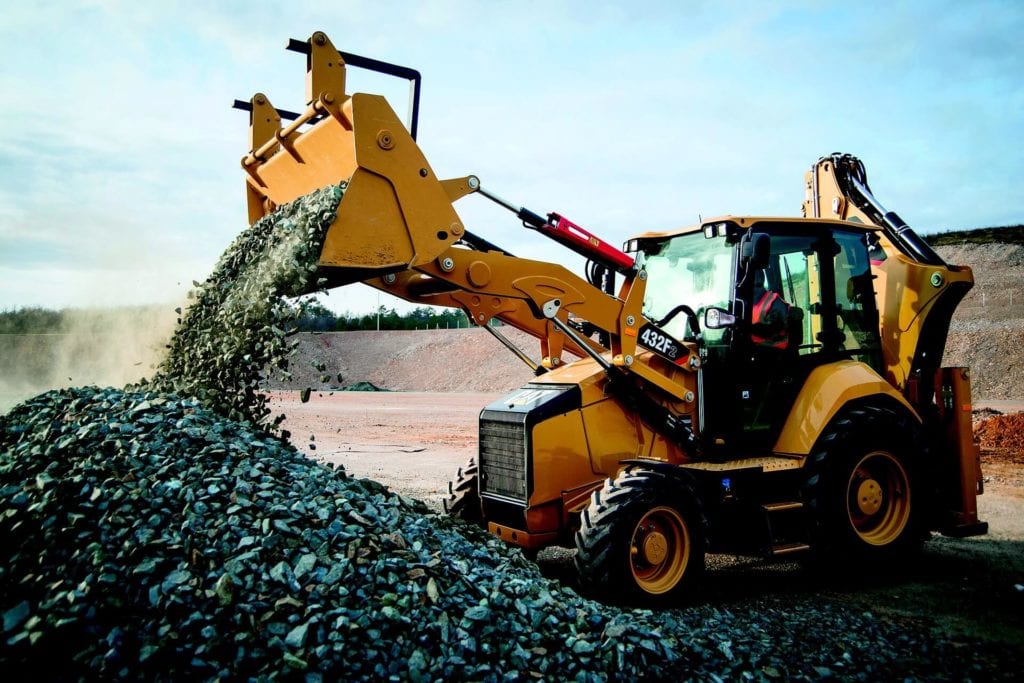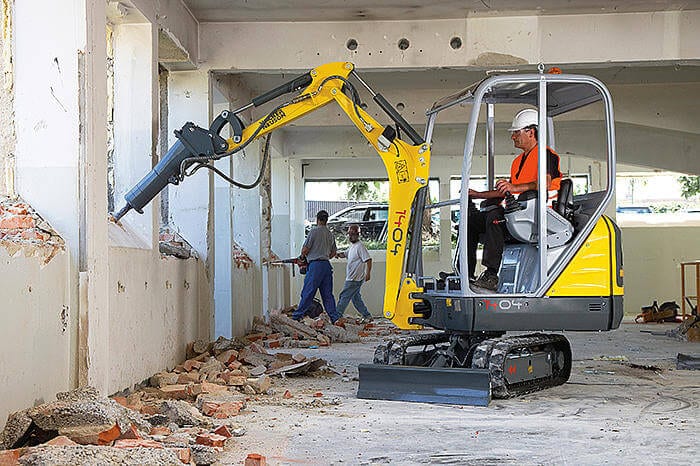Mini excavators have grown in popularity and can be found in a wide variety of dimensions and specifications. The term “mini excavator” (also referred to as a “compact excavator”) is a bit misleading. Although smaller in scale than the backhoe, the hydraulic mini excavator (hydraulics being used to control the excavator arm) is very close in matching its capabilities.
A typical backhoe is a tractor with the backhoe arm on one end and a loader on the other end, so it’s often called a “backhoe loader.” The backhoe is the mainstay of the construction and land development industries because it offers great flexibility of work. However, the mini excavator can handle nearly all the jobs that a backhoe can, such as:
 Breaking and removing asphalt or concrete
Breaking and removing asphalt or concrete- Demolition
- Digging
- Land clearing
- Lifting
- Loading
- Road and bridge work
- Transporting building materials or work tools
- Tree harvesting, transport, and planting
- Trenching
- Utility installation
Because of its smaller dimensions and lighter weight, the mini excavator is more appropriate for utility trenching, small-scale landscaping projects, and interior demolition. Meanwhile, the backhoe is in its element when plowing away snow or grading a road.
Something that makes all the above applications possible for the backhoe or mini excavator is the ability to switch out the bucket as well as use different attachments. Indeed, both types of machines can accommodate:
- Augers
- Breakers
- Grapples
- Hammers
- Rock buckets
- Thumbs
However, when looking at the backhoe vs. mini excavator, it is crucial to consider your specific job needs. A few factors to consider include:
- Size and terrain of the jobsite
- Available room to work
- Jobsite restrictions
Size and Terrain of the Jobsite
One of the advantages of a backhoe is that, being a tractor (wheeled instead of tracked), it can travel quickly – up to 25 miles per hour. For a very large job site in which a machine needs to travel across multiple acres during the day, this is an important advantage. The faster vehicle can reach more work areas more quickly, thus getting more done during the day.
On the other hand, the wheeled backhoe may not do well in an area that is very hilly or sloped. A mini excavator, which uses tracks instead of wheels, is the safer alternative in those situations.
Available Room to Work
Although the backhoe is the workhorse of the construction and land development industries, the fact that it is so large can be a drawback for some work areas. Imagine using a backhoe to remove the concrete surface of a narrow city alleyway, and you get the picture.
One of the reasons why the mini excavator is becoming so popular is because it can fit into places too small for the backhoe, even going through doors and gates. The mini excavator is particularly appropriate for indoor demolitions or areas already established, such as a residential backyard garden or public park.

Jobsite Restrictions
In some areas, it may not be possible to use a large trailer truck to transport a backhoe to the jobsite. Some roads cannot support the weight of the transport truck with the backhoe, or a special permit might be required. A hydraulic mini excavator can be transported on a trailer and towed with a standard pickup truck.
Because of its weight and large treads, the backhoe may also be inappropriate for areas where there are ecological or aesthetic concerns. The mini excavator is much easier on the ground beneath it, especially if special rubber tracks are used instead of steel tracks.
If a machine is needed indoors or in an area with noise restrictions, the electric mini excavator has no emissions and is five times quieter than its diesel version. Although they sound exotic, electric mini excavators are quite common and easily available for rent or purchase.
Still Need Assistance?
If you are not sure whether the backhoe or mini excavator is the right machine for your job, contact Pro Tool and Supply. We have experts available to answer your questions and help you narrow down your choices.




